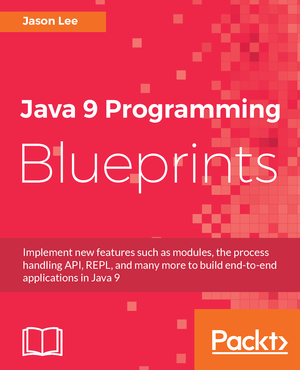2011
October
-
Funky Object Initialization
I’ve been using a technique a lot, recently, for initializing an object a bit more succinctly. It looks pretty odd, I’ll admit, enough so that it really caught a coworker of mine off guard. If you’ve been reading my recent REST posts, you’ve seen this a few times. I like it a lot, so I thought I’d a take a quick look at it.
February
-
Java EE's Buried Treasure: the Application Client Container
From time to time, I’m asked about accessing various EE artifacts (EJBs, etc) from a standalone client. Almost invariably, the user is having trouble getting the environment setup, grabbing an InitialContext, etc. Also almost invariably, my answer to them is "use the application client container", which is as far as I can take them. The topic of application client container, or ACC, came up again recently when I was asked on Twitter about an issue with ACC and GlassFish in a clustered environment. While this user (hi, Markus! : ) figured out his issue before I could be of much help, I took this opportunity finally to learn exactly what the ACC is and how to use it. Thanks to Oracle’s Tim Quinn for his patient and tireless help, here’s what I learned…
2010
March
-
Writing Selenium Tests for the GlassFish Admin Console
One of the results of the Oracle purchase of Sun has been an increased focus on testing — not that we didn’t test GlassFish before, but it was mostly manual in my area of the server. The task of automating this fell to me, and, after a little — ahem — testing, I settled on Selenium.
2009
January
-
Bootstrapping a JSF 2 project
I needed a break this afternoon, so I thought I’d see how easy it is to bootstrap a JSF 2 project. One of the biggest complaints about JSF 1.x is all that XML, so JSF 2 is aiming to fix that. How have we done so far? Based on this quick look (which is my first from-scratch JSF 2 app), really, really well.
2008
December
-
A One-Man JSF 2 Blog Storm
As the specification writing part of JSF 2 comes to a close, we’re getting a more complete implementation done on the reference implementation, Mojarra. One of the primary developers on Mojarra is Jim Driscoll (the other being Ryan Lubke, who has done such an excellent job on the 1.2 series). Jim, apparently, has been in a writing mood and has posted a number of very good (and small) posts on some of the features coming in JSF 2 (similar to Ryan’s series from earlier this year).
I was about to start planning a smallish app, to be based on JSF 2, so I was perusing Jim’s entries, and it occurred to me that a list of the links would be helpful for those following JSF 2 but not Jim’s feed, so here it is. I hope it helps. :)
I know Jim has more planned, so subscribe to his feed. It should be well worth your time.
November
-
Making Your GlassFish v3 Prelude Administration Console Plugin Pluggable
In my last article, I talked about writing plugins for the GlassFish v3 Prelude Administration Console, which showed the various integration types supported out-of-the box by the console, but what if a plugin developer would like to allow <i>other</i> plugins to extend it just like the console itself does. In this short article, we’ll show how to do exactly that.
-
Extending the GlassFish v3 Prelude Administration Console
Today, the GlassFish community is launching GlassFish v3 Prelude (Release Notes and Quick Start Guide). If you are not familiar with what Prelude is, here is a short write up giving the high level details. In this article, I’d like to focus on the third bullet there, "CLI and administration console extensibility." Specifically, we’ll look at what it takes to create a plugin that will extend GlassFish v3’s Administration Console.
February
-
A ValueChangeListener Question and Answer
At the lunch session of the OKC JUG today, a question was asked about the difference between the valueChangeListener attribute and
<f:valueChangeListener/>. That is,1 2 3 4
<h:selectOneMenu id="optionMenu" value="#{optionBean.selectedOption}" valueChangeListener="#{optionBean.optionChanged}" onchange="submit()"> <f:selectItems value="#{optionBean.optionList}" /> </h:selectOneMenu>
and
1 2 3 4
<h:selectOneMenu id="optionMenu" value="#{optionBean.selectedOption}" onchange="submit()"> <f:selectItems value="#{optionBean.optionList}" /> <f:valueChangeListener type: "com.mycompany.MyValueChangeListenerImpl" /> </h:selectOneMenu>
The question was, which is "better?" There was also a question if the latter form automatically handled the JS on the parent component. I will now attempt to answer those questions. :)
2006
December
-
JSF Component Writing Check List
= JSF Component Writing Check List I've been doing a fair amount of JSF component writing of late, and, invariably, I miss one or more "minor" details, causing my component to explode in spectacular fashion at runtime. What follows, then, is a check list for writing JSF components, with notes on the differences between the 1.1 and 1.2 versions of the specification.
 My name is Jason Lee. I am a software developer living in the middle of Oklahoma. I’ve been a professional developer since 1997,
using a variety of languages, including Java, Javascript, PHP, Python, Delphi, and even a bit of C#. I currently work for Red Hat
on the WildFly/EAP team, where, among other things, I maintain integrations for some MicroProfile specs, OpenTelemetry, Micrometer,
Jakarta Faces, and Bean Validation. (Full resume
My name is Jason Lee. I am a software developer living in the middle of Oklahoma. I’ve been a professional developer since 1997,
using a variety of languages, including Java, Javascript, PHP, Python, Delphi, and even a bit of C#. I currently work for Red Hat
on the WildFly/EAP team, where, among other things, I maintain integrations for some MicroProfile specs, OpenTelemetry, Micrometer,
Jakarta Faces, and Bean Validation. (Full resume 